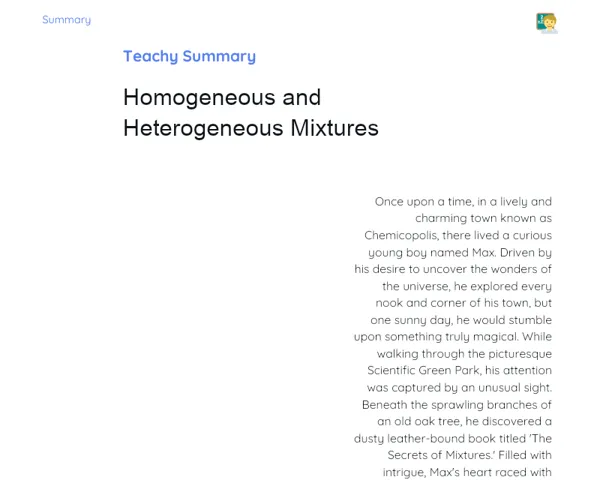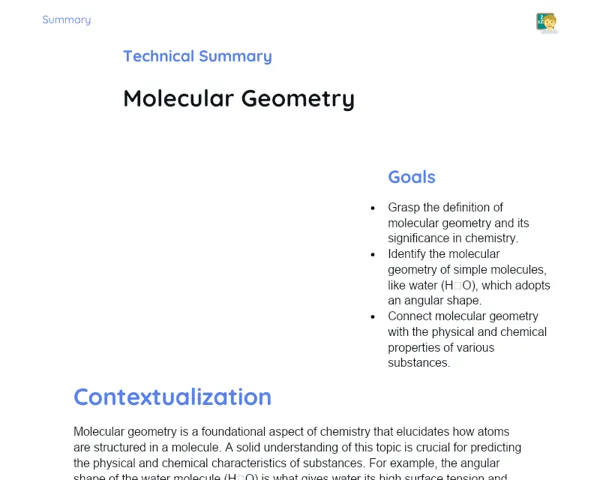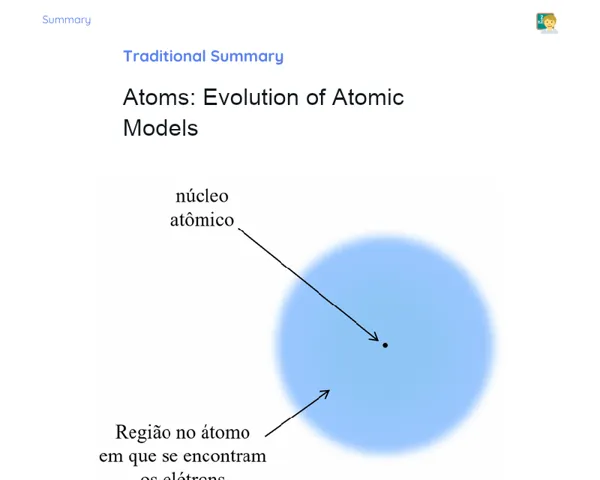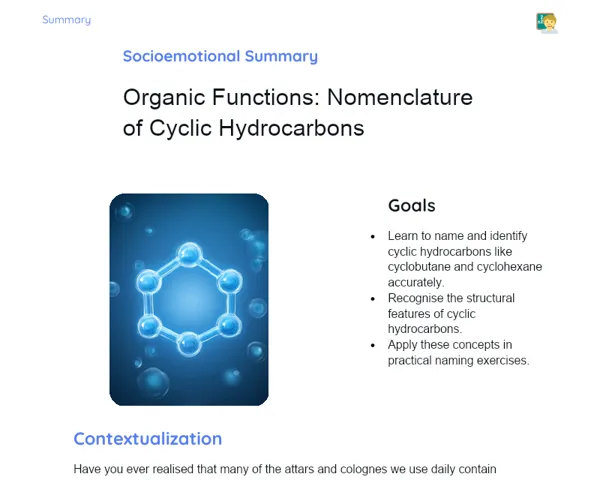Goals
1. Understand why balancing chemical reactions is crucial for the conservation of mass.
2. Learn to effectively balance chemical equations using the trial-and-error method.
Contextualization
Balancing chemical reactions is a vital skill in chemistry that ensures mass is conserved during reactions. Think of it like a cook fine-tuning a recipe: if they don’t measure the ingredients accurately, the dish could turn out poorly. Similarly, balancing reactions is key in chemistry for achieving the desired outcomes safely and reliably. For instance, in the pharmaceutical sector, precise balancing is needed for correct medication dosages. In the energy sector, balancing reactions optimises fuel efficiency and lessens environmental impact.
Subject Relevance
To Remember!
Concept of Chemical Reactions
Chemical reactions involve the transformation of substances known as reactants into new substances called products. During these reactions, the chemical bonds in the reactants break and new bonds form in the products.
-
Reactants and products: The materials that initiate and result from a chemical reaction.
-
Transformation of substances: A change occurs in the chemical makeup of reactants to produce the products.
-
Breaking and forming bonds: These are essential stages in converting reactants into products.
Importance of Balancing Reactions
It's crucial to balance a chemical reaction to ensure the number of atoms of each element is equal on both sides, in line with the Law of Conservation of Mass. This guarantees that the total mass of the reactants is equal to the total mass of the products.
-
Law of Conservation of Mass: The total mass of the reactants must equal the total mass of the products.
-
Equality of atoms: Each element must have the same number of atoms on both sides of the reaction equation.
-
Industrial relevance: This balance is essential for safe and effective production processes, especially in manufacturing pharmaceuticals and fuels.
Trial-and-Error Method for Balancing
The trial-and-error method is a structured way to balance chemical equations. It involves changing the coefficients in front of the chemical formulas until the number of atoms for each element is equal on both sides.
-
Adjusting coefficients: Changing the numbers in front of the chemical formulas to achieve balance.
-
Systematic approach: Using a step-by-step strategy to ensure the equation is balanced.
-
Practice necessary: This skill enhances with regular practice and working on various types of chemical equations.
Practical Applications
-
Pharmaceutical industry: Balancing chemical reactions is essential for ensuring the right dosage and effectiveness of medicines.
-
Fuel industry: Balancing reactions is vital for improving energy efficiency and reducing emissions.
-
Food production: Balancing reactions is used to guarantee the quality and safety of processed food items.
Key Terms
-
Reactants: Substances that take part in a chemical reaction and are transformed into products.
-
Products: Substances produced as a result of a chemical reaction.
-
Coefficients: Numbers that appear before chemical formulas in an equation, indicating the amount of molecules or atoms involved.
-
Law of Conservation of Mass: The principle that states the total mass of a closed system remains constant despite the chemical transformations taking place.
Questions for Reflections
-
Why is it important to ensure the conservation of mass in a chemical reaction?
-
In what ways can the balancing of chemical reactions improve the efficiency of industrial processes?
-
How might mastering the skill of balancing reactions shape your future career?
Practical Challenge: Balancing Industrial Production
In this mini-challenge, you will utilise the trial-and-error method to balance chemical equations from real industry scenarios.
Instructions
-
Form groups of 3 to 4 students.
-
Each group will represent a 'factory' responsible for the accurate production of chemical products.
-
Receive the list of chemical reactions that require balancing.
-
Employ the trial-and-error method to adjust the coefficients and achieve balance in each equation.
-
Present your balanced equations and explain the reasoning behind your adjustments.



